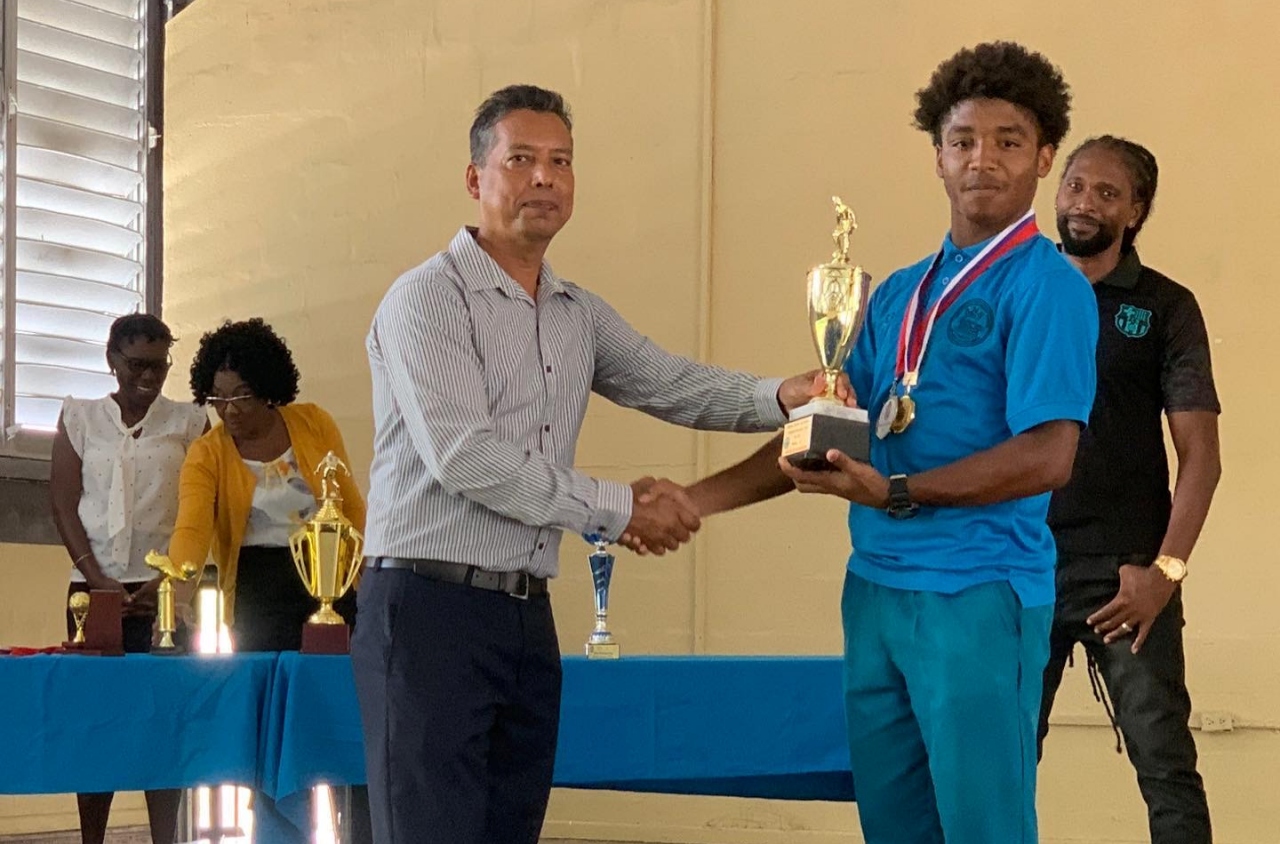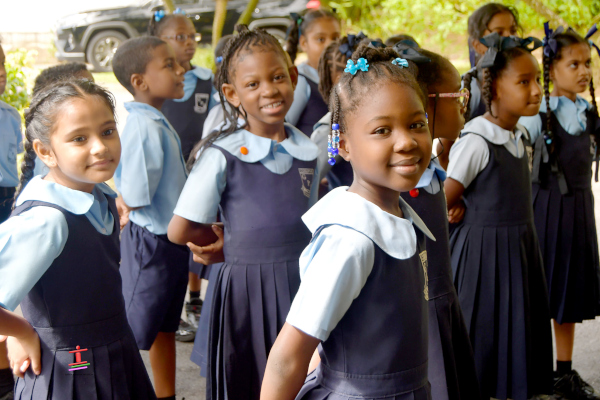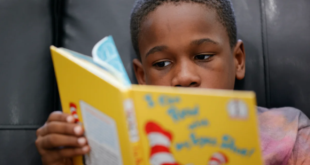“[…] Tutors face many challenges in this pandemic era that they possibly were not prepared for at teaching college. Most students are technologically savvy, and in the age of memes and TikTok, teachers are at risk of being ridiculed…”
Today Wired868 features a secondary school visual arts teacher with more than 20 years’ teaching experience at primary and secondary schools. This married father of one from south Trinidad shares how he is coping with the switch from physical to online teaching.

How has the transition been from physical to virtual classes?
I have been working online with different programmes with the ministry and so on in the past, so it was an easy transition for me.
Now teachers nationally have been doing what we call OER courses—online courses—for two weeks quite recently, post-Covid, because the government was preparing teachers to teach online. So, as it stands, if not all, the majority of teachers have been trained in how to use OER.
The transition to online was easy for me because I am comfortable being online, but I can understand why it’s difficult for some teachers who do not have that experience.
How have you restructured your lesson plans to suit online teaching?
If we break it [teaching modes] up into two broad categories, we have what you call synchronous and asynchronous. I use the synchronous method of teaching. I log on to my Google classroom, I start up a Google meeting and I teach live. I prepare my slides beforehand and I share my screen with the students while teaching.
Then there is asynchronous, which most teachers are more comfortable with. They prepare their slides before, they upload it onto their virtual classroom or they send it via WhatsApp, and students can access it do the work, take a picture and send it back or submit it.

What platform do you use?
A lot of schools are using Google classrooms. With Google classroom, you are allowed to upload your work, students can log in for attendance and they can hand up assignments.
What our school did, we sought permission from Google itself and we downloaded the entire Google suite programme. We got a teacher who was versed with the entire suite to do virtual training with the entire staff before the start of the school term.
It would have been wise for schools to take that route, but I know all schools did not do that. Some teachers are still teaching via WhatsApp, some teachers are still teaching via Zoom.
It is not the correct or the right platforms to achieve what you want to achieve. For instance, if you are doing your lessons on WhatsApp, you cannot do a call to accommodate 150 to 200 students. So, the most you can do is send asynchronous things for children to do, and they can take a picture and send it back.
Really and truly, if we do that, how can I tell if the parent is doing the child’s work? Or if a bigger brother or sister is doing it? How can I truthfully assess the children in my class?

Now, I can understand also that many teachers are not comfortable with these different platforms for many reasons. Also, because we know that children are a bit more tech-savvy than us. On the negative side, they [take] screenshots, they edit pictures, they make memes, they post clips of videos.
We have seen videos popping up with teachers teaching and profanity and different things being said, and I think teachers will have a fear of that. And it’s quite understandable.
Have you had any negative incidents thus far with students or parents?
No, I have not, but I know of some incidents where students typed profanity in the classroom chat. Honestly, some students don’t know. As the adults, we have to teach them what is the right and wrong things to do, especially with ‘netiquette’.
The very first week of school, I had an orientation and I clearly stated what were the rules of the online classroom. So, students know when they log in, they acknowledge everyone who is there, whether it’s verbally or through the chat, and then mute your mic and await instructions. Speak one at a time.
The classroom management skills that a teacher has comes into play. In a physical classroom, if I cannot walk into a class with 20 or 30 children and manage the behaviour of the children in that classroom, then how can I do it virtually?

(via Brookings.edu)
Our administration understands that some teachers will have a problem managing class virtually. In order to assist those teachers, we have our deans join some of the online sessions. If some of the students are misbehaving in the chat, their mic is on and they don’t want to mute it, or they are showing things that they are not supposed to show, our dean will take a record of that, handle it on the spot or contact the parent if need be.
What tactics do you use to keep your classes focused while teaching online?
Last week Wednesday, 57 students logged into my class. Now managing is not difficult if you know how to speak to children, and if you know how to make your lesson engaging.
To sit in front of a device for 40 minutes unless you are on social media, or you are making a TikTok, or you are on a live chat with your friends, can become stressful. It can become boring and you may be tempted as a child to do something to distract the class.
That is why as a teacher, your class must be engaging in this virtual classroom. You can share your screen, add games to it so that your class can participate right there on the spot. You can have them read individually while you share your screen. These are some of the things that teachers can do to keep the engagement up while teaching virtually.
Do all your students have access to the online classroom and materials?
While the ministry would have equipped teachers with devices, students would have had to source their devices themselves. Some devices that students may have access to may not be as high tech, therefore, they cannot download the Google meet app, so they cannot participate in online classes. Or they may not have enough memory on their device to download the slides. So, there are challenges and we need to understand that as well.

Ideally, I will love for 100% of my students to attend their classes online; however, in reality, that is not the case. I can safely say that in the last three weeks of teaching, the trend is that 13% of my students will not be doing anything concerning art for this term, as they have not logged on to the Google classroom.
I was elated to hear that the minister of finance, in the reading of the budget, say that the government is going to provide “MyFi” for 45,000 students— which are accessible mobile devices with internet [access] that can accommodate a few households within range. That will be very useful.
What has the school been doing to facilitate the students who do not have access to the e-classroom?
I personally know some teachers who have dipped in their pockets to assist students who did not have devices. One had a few extra devices at home, which she refurbished and gave to her form five students who are currently doing their SBA [School Based Assessment].
The minister indicated that for students who did not have access to the online classes, it is the responsibility of the teacher to create hard copy packages for the parents to collect and return to the school when the students completed the assignments.

Some Covid-19 related concerns were raised because you don’t know who is handling these packages when they are being picked up [or] when they stay with the child for the week. When the packages are returned to the school, are they being properly sanitised?
All these concerns were raised with TTUTA [Trinidad and Tobago Unified Teachers Association] and with the ministry, and that is in discussion right now.
I can also say this, packages in some schools are not being picked up. If they are collected it is by the minority of parents. In can also say that for some of the students that I teach their parents are not interested in collecting the packages.
In our school, we have a system for the collection of report books—parents have to come in to collect on a designated day at the end of every term. And every term more than 75% of report books remain lodged at our school.
I teach in one of the under 30% schools, which is the broad category given to schools that were previously classified as a Junior Secondary School.

(Courtesy bpartofit)
In your opinion do you think, on a national scale, some children are being left behind because of their socio-economic status?
I am going to say yes, and this is basically for two reasons: a teacher could be teaching, and no learning is taking place because somebody else is doing the work that is sent home. Parents have this fear that if they upload something that is incorrect, the child can be penalised, they (the child) might not get promoted.
Also, there are students who do not have access to online learning, as mentioned before 13% of my students have not accessed the Google classroom. So, it is obvious that those children will be left behind.
Do you see any improvement that can be made to the existing system for the virtual classroom?
Yes, I do. And I am glad that the minister of finance has indicated that ‘MyFi’ will be provided for the students who did not have access to the internet. We are talking about roughly 45,000 students plus who do not have access to online learning. The majority of students want to be online; they don’t want to be left behind but some of them cannot because they do not have access to the internet. Everyone will not benefit from the online class, but I am happy that we are taking steps in the right direction.
How has Covid-19 affected your personal life?
Firstly, let me say it feels good to be home a bit more. On the same side of that, my son, who is eight, is home as well because school has closed physically. Getting to spend more time with him and the family is a plus.
On the funny side of things, I can say that I am glad to be working from home. I can teach in short pants. I can be comfortable in my space working from home.
How do you balance your child’s home-schooling and teaching online?
I prepare my lessons in advance, that way I can ensure that things run smoothly. For instance, if I’m teaching form twos, the online screen time is only 40 minutes. I deal with all my form twos at the same time on the Google classroom.
Forty minutes out of the entire day will not affect my child’s home-schooling. During that time, I try to occupy him with what he needs to do and at the same time teach my class.

Do you think virtual classrooms are here to stay?
This all depends on the pandemic. As we may realise, this might go on for the next year or two. As it stands this is the mode we are dealing with. This is the mode we have to make the norm. Let’s assume that forwardly thinking this is what we have to do until the time comes where it is safe to go back outside. I would advise teachers, I would advise students and, most importantly, I would advise parents to make the necessary adjustments for your child’s benefit.
Avanelle Boyce is an intern at Wired868 who is currently pursuing her BA in Mass Communications at COSTAATT. She enjoys photography, writing, blogging and any activity that involves tapping into her creative side.
 Wired868 Wired868 for smart sport news and opinion
Wired868 Wired868 for smart sport news and opinion






